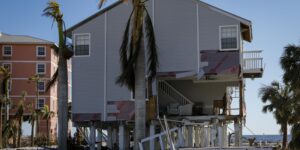 Amica Mutual Insurance Company no longer has a perfect financial strength rating from A.M. Best. More catastrophe losses and worsening automobile insurance claims severity are both to blame.
Amica Mutual Insurance Company no longer has a perfect financial strength rating from A.M. Best. More catastrophe losses and worsening automobile insurance claims severity are both to blame.
Specifically, an A+ (Superior) financial strength rating (FSR), down from A++(Superior), now applies to Amica Mutual Insurance Company and its wholly owned subsidiary, Amica, Property & Casualty Insurance Company (known jointly as Amica Mutual Group).
Separately, A.M. Best’s long-term issuer credit ratings for both entities have been downgraded to “aa” from “aa+.”
A++ is the highest financial strength rating A.M. Best gives.
A.M. Best revised the outlook of the long-term issuer credit ratings to negative from stable, though the outlook of the financial strength ratings remains stable. As well, A.M. Best affirmed the financial strength rating of A+ and the long-term issuer credit rating of “aa-” for Amica Life Insurance Company, an Amica Mutual wholly-owned subsidiary. The outlook for both is stable.
A.M. Best noted that Rhode Island-based Amica keeps a strong risk-adjusted capitalization, but said the ratings downgrades come from “deteriorating underwriting results in recent years, mainly driven by increased catastrophe losses in conjunction with elevated losses on the automobile insurance line of business, due primarily to increases in claims severity.”
Amica is a direct writer of personal lines property/casualty products, and, as A.M. Best noted, has seen net underwriting losses reflected in an increasing loss ratio in recent years.
“Management has responded with rate increases, and coupled with a return to a more normalized level of loss activity, expects underwriting results to improve in the near future,” A.M. Best said. “Additionally, surplus growth has been tempered over the latest five-year period, primarily due to the payment of significant levels of policyholder dividends.”
Another point of A.M. Best’s concern: Amica’s results have depended “heavily” on both net income and realized capital gains, which have been a positive factor for recent years’ cash flows.
But in 2015, Amica said it had negative operating cash flow due to its higher-than-normal catastrophe experience, though positive cash flows from operations returned in 2016, A.M. Best said.
“The ratings also reflect Amica’s strong, yet declining, level of risk-adjusted capitalization, reflective of a high quality investment portfolio and relatively low underwriting leverage, solid liquidity, generally favorable operating returns and national market presence and brand recognition, with a reputation for excellent customer service,” A.M. Best said.
Source: A.M. Best




















 That Insurance Talent Crisis? It’s a Global Knowledge Opportunity
That Insurance Talent Crisis? It’s a Global Knowledge Opportunity  Inflation Contributes to Rising Loss Costs for U.S. Commercial P/C Insurers: Fitch
Inflation Contributes to Rising Loss Costs for U.S. Commercial P/C Insurers: Fitch  AM Best Downgrades State Farm General Ratings
AM Best Downgrades State Farm General Ratings 






